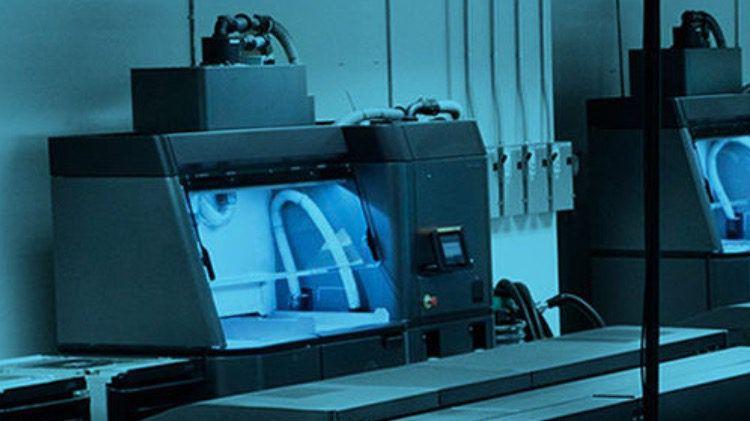The Three Things Global Leaders Need to Do to Prepare for the Next Big Economic Shift
By Dion Weisler, President and CEO, HP Inc.

Originally published on Quartz
The fourth industrial revolution is upon us. Technology, jobs, government policies, and entire economies around the world are on the edge of a massive shift. This presents a once-in-a-generation opportunity for global leaders to come together and embrace new digital technologies that hyper-charge their economic prospects, create new manufacturing jobs, educate the next generation of highly skilled labor, and ultimately shape the next hundred years of our planet.
As world leaders gather in Davos for the 48th World Economic Forum Annual Meeting, it’s clear that digital transformations are intensifying. Today’s leaders have a choice: proactively disrupt the status quo to create a brighter future in their businesses/countries, or risk falling behind and being permanently disrupted.
The WEF estimates $100 trillion of value will shift within the next decade, dramatically reshaping and improving our world. In this historic sea of change, companies, governments, citizens, and communities must work together in cooperation as the ramifications span global economies and impact every aspect of society, trade, education, manufacturing, international policy, security, sustainability, the global workforce, and much more.
The $12 trillion global manufacturing sector is uniquely primed for disruption, as design, production, and distribution goes through a radical transformation and becomes increasingly digitized. Today, the production value chain accounts for more than 30% of the world’s GDP and more than 25% of global employment. Within the manufacturing industry, design and production are being democratized as advanced technologies such as 3D printing and AI become more accessible, and digitized supply chains become faster, cheaper, leaner and more sustainable.
Transformation is never simple. There will be thousands of new startups tinkering with possibilities and challenging entrenched players, as virtually every nation and major industry understands and embraces the opportunity. This is a good thing; innovation and competition are the lifeblood of progress. History has shown that innovation must be coupled with savvy entrepreneurialism to be successful, and this is no exception.
As 3D printing matures from its infancy to powerful adolescence capable of high volume quality production, it’s increasingly critical that technological innovation be coupled with strategic and lasting partnerships across government, industry, and academia to ignite manufacturing’s digital reinvention. New research from HP and A.T. Kearney underscores the importance of public-private partnerships and comprehensive government engagement in driving this next industrial revolution. In the US alone, coordinated efforts could create $600 billion to $900 billion in new revenue and 3 million to 5 million new jobs in the next 10 years.
There are three key catalysts needed to build a successful and sustainable 3D printing ecosystem for a fully-digitized world: education, adoption, & incentives.
Education
Global leaders need to prioritize the creation of new educational programs and incentives for comprehensive training in 3D design, engineering, and the associated skills. This entails not only creating opportunities for workforce training and education, but also providing educators and institutions with the R&D funding they need to foster the growth of digital manufacturing capabilities and ecosystems worldwide.
Today, China, the UK, Canada, Singapore and others are already invested hundreds of millions of dollars to advance the engineering capabilities and reimagine design and production for 3D technology. This is only the tip of the iceberg; investment is needed to help create new educational programs and build a tech-savvy, upskilled global workforce across operations, engineering, logistics, management, and other functions.
Adoption
We are on the precipice of widespread economic and societal change, and countries, business leaders, and global citizens should understand the massive value and opportunity that comes with manufacturing’s analog-to-digital transformation. Those who embrace new technology now will set the agenda. Jobs and entire economies will shift around the globe as manufacturing migrates closer to the consumers they serve, and to places where 3D printing and other digital technologies are being fully realized. The industry is at an historic technological and economic inflection point, and the countries at the leading edge of digital manufacturing will secure their place of global leadership and innovation for decades to come.
Incentives
As the world races toward a 3D-printed future, governments can accelerate robust and sustainable 3D ecosystems in their geographies by directly incentivizing investments and development of digital manufacturing capabilities through tax breaks and direct grants. China, for example, has embarked on a “Made in China 2025” initiative promoting significant incentive models for 3D printing. Germany, India, and Japan have announced their own such initiatives, but more countries need to join suit if they want to have digital manufacturing expertise in their markets.
The scope and gravity of the fourth industrial revolution fills me with a sense of awe, great optimism and excitement for what lies ahead. As government, business, education, and world leaders come together to strengthen cooperation and create a better world, the future is ours to reinvent.

